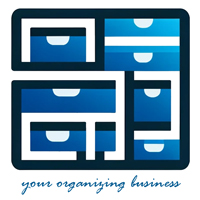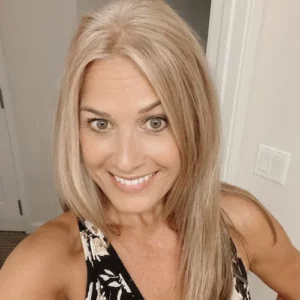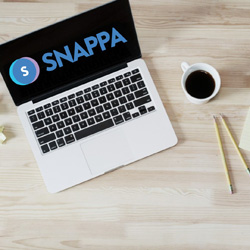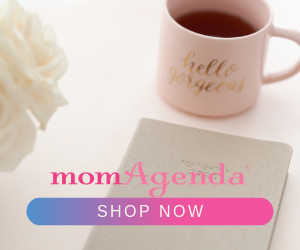6 Effective Communication Skills for Professional Organizers

This page may contain links to Amazon.com or other sites from which I may receive commission on purchases you make after clicking on such links. Read my full Disclosure Policy
The last few years have brought about a lot of shifts in both our business and personal lives. A number of organizers began offering virtual services, and many continue to do so, either exclusively or in addition to in-person services. Whether you work with clients online or in their homes or offices, communication skills are key to forming and building a good working relationship.
I’m pleased to welcome guest blogger Lisa Cantu of An Organized Home OC, with some excellent advice.

As a professional organizer, effective communication is critical to understanding your clients and providing exceptional service. It can be the difference between a successful organizing project and an unsatisfactory client experience.
You’ll be better equipped to connect with your clients, identify their needs, and deliver tailored organizing solutions that exceed their expectations by honing your communication skills.
In this blog post, I’ll share valuable communication techniques to help you enhance your client relationships, create a comfortable environment, and deliver tailored organizing solutions.
Let’s dive in!
Mastering the Art of Active Listening
Active listening is crucial for professional organizers to foster strong connections with their clients and create a solid foundation for successful organizing projects. It involves hearing your clients’ words and understanding the underlying emotions and intentions behind those words.
Here are some strategies to elevate your active listening skills:
- Be fully present: Give your undivided attention to the client by silencing your phone, eliminating distractions, and focusing solely on the conversation.
- Maintain positive body language: Ensure your body language is open and inviting by uncrossing your arms, leaning slightly forward, and maintaining a relaxed posture.
- Practice patience: Allow your clients to express themselves fully without rushing or interrupting their thoughts. This demonstrates respect and encourages open communication.
- Listen for emotions: Tune in to the emotional undertones of your clients’ words to better understand their feelings, concerns, and motivations. This will help you tailor your approach to their unique needs.
- Take notes: Jot down important points, ideas, or concerns mentioned by the client to ensure everything is noticed and to demonstrate your commitment to addressing their needs.
- Paraphrase and clarify: Periodically paraphrase what you’ve heard to confirm your understanding and allow your clients to clarify or expand on their thoughts.
- Use verbal and nonverbal cues: Show your clients you’re engaged and attentive by using verbal cues like “I see,” “Mhm,” or “Tell me more,” and nonverbal cues such as nodding and maintaining eye contact.
- Ask insightful questions: Pose thoughtful, open-ended questions to encourage your clients to elaborate on their thoughts, feelings, and preferences, which can provide valuable insights for the organizing project.
By mastering the art of active listening, you’ll create a positive and supportive environment for your clients and pave the way for successful organizing projects that meet and exceed their expectations.
Cultivating Empathy and Compassion
Professional organizers need empathy and compassion to build strong client relationships and create a supportive atmosphere.
Here’s how you can enhance your empathetic approach:
- Practice active listening: As mentioned earlier, active listening helps you understand your clients’ emotions and perspectives, which is key to demonstrating empathy.
- Validate emotions: Acknowledge your clients’ feelings by expressing understanding, such as saying, “I can see why you’d feel overwhelmed,” or “It’s understandable that you’re frustrated.”
- Offer encouragement: Provide reassurance and support, letting your clients know that they’re not alone in their organizing journey and that you’re there to help them achieve their goals.
By fostering empathy and compassion in your interactions with clients, you’ll create a comfortable and trusting environment that enables you to address their organizing challenges effectively.
Engaging Clients with Open-Ended Questions
Utilizing open-ended questions is an effective way to engage clients, stimulate deeper conversations, and make them feel heard and valued.
As a professional organizer, asking more questions demonstrates my commitment to understanding clients’ needs and adds value to my services.
Here’s how you can incorporate open-ended questions into your client interactions:
- Focus on the “why” and “how”:
-
- Frame your questions to explore the reasons behind clients’ organizing challenges.
- Ask how they envision their ideal space.
- Encourage reflection:
- Prompt clients to think about their organizing habits, goals, and preferences.
- Uncover valuable insights for your project.
- Create a safe space:
- Foster an environment where clients feel comfortable sharing their thoughts and concerns.
- Use open-ended questions to avoid judgment.
By incorporating open-ended questions into your communication repertoire, you’ll be better equipped to understand your client’s unique needs and tailor your organizing approach accordingly. Therefore, I encourage using open-ended questions, as they add value to your professional organizing services.
Setting Expectations and Boundaries
Establishing clear expectations and boundaries is vital for a smooth organizing process and for preventing miscommunication or frustration. Understanding expectations begins with the first phone call and continues to the walk-through on the day of the project.
As a professional organizer, I’ve learned the importance of defining roles, responsibilities, timelines, and goals.
Here’s how you can set expectations and boundaries with your clients:
- Discuss project scope and objectives:
-
- Clarify the areas to be organized.
- Identify specific goals and desired outcomes.
- Clearly define each party’s responsibilities:
- Outline tasks for you and the client.
- Discuss any third-party involvement, if applicable.
- Agree on realistic deadlines and milestones:
- Set an achievable timeline for each phase of the project.
- Schedule regular check-ins to monitor progress.
Setting expectations and boundaries up front will create a solid foundation for a successful organizing project and a positive experience for you and your clients.
Providing Constructive Feedback
Offering constructive feedback is essential for helping clients make progress and feel motivated while avoiding overly critical or judgmental comments. As a professional organizer, I’ve discovered the value of delivering positive, solution-oriented feedback. To provide effective feedback to your clients, consider the following strategies:
- Focus on specific behaviors or issues: Address concrete actions rather than personal traits. This allows you to highlight areas for improvement without assigning blame.
- Acknowledge the good before providing criticism: When offering constructive criticism, always emphasize the positive aspects of your clients’ efforts before suggesting recommendations for improvement. This approach helps create a supportive atmosphere that nurtures a strong working relationship.
By employing these strategies for constructive feedback, you’ll foster an environment where clients feel motivated to achieve their organizing goals while nurturing a solid working relationship.
Follow-up and Ongoing Communication
Maintaining open lines of communication after the organizing project is complete is crucial for ensuring client satisfaction and building long-term relationships. As a professional organizer, I’ve learned the importance of regular follow-ups and ongoing communication.
Here’s how you can maintain a strong connection with your clients:
- Schedule follow-up sessions: Arrange periodic check-ins with clients to review their progress, address concerns, and offer ongoing support.
- Celebrate successes: Acknowledge and celebrate your clients’ accomplishments in maintaining an organized space, strengthening your relationship, and encouraging their continued commitment to organization.
- Be available for questions and support: Let your clients know you’re accessible for any questions, concerns, or additional support, even after completing the project.
By focusing on follow-up and ongoing communication, you’ll demonstrate your commitment to clients’ long-term success, foster trust, and lay the foundation for lasting relationships that can lead to repeat business and referrals.
Final Thoughts
In conclusion, the power of effective communication in the professional organizing world cannot be overstated. By honing your communication skills and embracing the strategies shared in this blog post, you’ll elevate your client relationships and enhance the overall organizing experience for you and your clients.
Remember, the ultimate goal is to create lasting connections, exceed expectations, and empower clients to transform their spaces into organized, functional, and joyful sanctuaries. So, let’s continue the conversation, grow together, and create organized spaces that inspire and uplift one client at a time!
Did you find this post helpful?
Share it with your network, and sign up to get new posts by email every week!












I agree with Lisa on all of this. Working with people as we touch their stuff is such a privilege, and we should treat that privilege with respect. I often say, “Talk to me about this.” Then I try and listen. Often, people have clear reasons why they hold onto items. That is helpful, because then we can discuss whether or not that reason is serving them going forward.
Patience, patience, patience. It can be hard, because we can see what can be accomplished and want to give the client a great result. But as Lisa says, the goal is a long term relationship of trust.
I would definitely feel more comfortable working with a service provider who took the time to listen to me, understand my wants and needs, and communicate with tact and compassion about why my own ideas won’t work.
I love everything about the ideas from Lisa. She so beautifully describes how to have open, positive, supportive communication with her clients. As I read through her suggestions, it felt like the gold standard of how we can be. Also, great to note how many of these skills apply to all relationships.
I love the prompt you mentioned, “Tell me more.” It’s non-threatening and allows the other person to direct the conversation comfortably.
A course I took recommended something similar – after a client answers a question, ask “What else?” I must remember to do that more often!
Great post! Open-ending questions are so helpful! I’ve used them often. Sometimes I feel like a two-year-old asking why so often. Lol But, it does help get them to open up and learn more about the reasoning for the kept item.
I have absolutely uncovered gems that probably wouldn’t have come out if I hadn’t remembered to ask “What else?”
Every bit of this is excellent. Lisa should teach this at a future NAPO conference. There’s advice here for beginners and well as veterans, and I love the focus on constructive criticism focusing on future actions rather than personality traits. Our clients are often so vulnerable, and they need to be supported but firmly moved toward their goals.
Open-ended questions really are key. So often, I’ll say, “tell me the story of…” when I’m picking up and item, or when someone says, “I have to keep…” instead of just asking why, I’ll prompt, “Tell me more about that” and often people will coach themselves right out of their own narrow thinking. Stellar guest post!
It would be an excellent conference session!
I saw this on LinkedIn thanks to Julie Bestry’s “teaser” and wow, this is an outstanding post!
Lots of little nuggets to take away, but best of all is how clearly Lisa communicated so much in such a succinct manner!
Writing succinctly is another valuable communication skill!